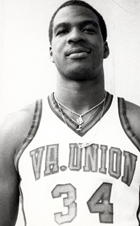The Toronto Raptors Could Be … Pretty Good?
In the aftermath of Masai Ujiri’s unceremonious exit, it’s hard to separate Toronto’s exorbitant payroll from the talent on its roster. This is a wildly expensive basketball team that’s inexplicably over the tax. At the same time, the Raptors can—and maybe even should?—be a competitive playoff team this season, which is meaningful considering it’s been three years since they last competed in the postseason.
So much of their collective growth depends on the strides Scottie Barnes is able to make in what’s somehow already his fifth season, a marginal concern considering his development plateaued a bit last year. Barnes’s 3-point shooting fell down to a concerning 27.1 percent—the largest drop by any player who logged at least 2,000 minutes—and, on a team that couldn’t space the floor, he found himself settling for too many long 2-pointers.
It’s not super encouraging when your 23-year-old franchise player has the least efficient season of his career after three promising campaigns that included an All-Star appearance and a Rookie of the Year trophy. Barnes’s outside shot will absolutely need to perk up if the Raptors are going to even be average on offense.
But there’s still so much to be excited about, including an on-court persona that’s impolite in all the best ways. He has the all-around pedigree of an All-NBA candidate: size, feel, competitiveness, and two-way positional versatility that’s enhanced by a willingness to pass the ball. He can see the entire floor running a high pick-and-roll and has enough craft, speed, and upper body strength to find an advantage when defenses switch the initial action. There are tight pocket passes, corner skips, and lightning quick decisions to beat rotating opponents. His teammates cut hard knowing they will get the ball when their own man is too concerned with slowing Barnes down. That’s very good.
From there, his supporting cast, when healthy, is simultaneously overpaid and underrated. Brandon Ingram, Immanuel Quickley, RJ Barrett, and Jakob Poeltl are all very good NBA players who, around Barnes, have enough playmaking, outside shooting, and defensive tenacity to form one of the more competent and imposing starting fives in the Eastern Conference. Off the bench, Ochai Agbaji and Gradey Dick can space the floor as spot-up threats who don’t panic when they have to put the ball on the floor. Ja’Kobe Walter and incoming rookie Collin Murray-Boyles are unproven with upside.
The most intriguing subplot is the on-court relationship Barnes develops with Ingram, who was acquired before the trade deadline and then spent the rest of the season sidelined with a badly sprained ankle. A 27-year-old pseudo-star whose thin postseason resume deserves less criticism when you consider several factors outside his control (questionable health and unreliable teammates), Ingram could be an ideal second option who can make just about any play when tasked with the responsibilities normally held by a primary ball handler.
He’s a few years removed from his days as an accurate high-volume 3-point shooter, but in an environment that doesn’t overextend his talent there’s a practical path for that version of Ingram to reappear.
How much all this costs isn’t entirely negligible, of course. Reckless spending in this financially stringent era can directly lead to depth-related constraints. Hence, Toronto is not a deep team. It needs production from rookie-scale contracts and veterans who couldn’t earn more than a minimum deal. If ownership wants to duck the tax, a thin bench goes hollow.
How the Raptors got here is a frustrating sore spot for those who remember and appreciate the winning pieces from which they pivoted away. Two years ago, this club employed Pascal Siakam, OG Anunoby, and Fred VanVleet, three excellent players who, on their current contracts, make less sense beside each other than they do supporting Tyrese Haliburton, Jalen Brunson, and Kevin Durant, respectively.
It’s more than fair to criticize Toronto’s reactive approach with each one, though. VanVleet left for nothing as a free agent, while Siakam and Anunoby were both traded in the final year of their contracts, which inhibited Toronto from maximizing its return (three first-round picks and the right to pay Quickley and Barrett more than they’re probably worth).
And so here we are, trying to parse a team that’s somehow over budget and overlooked. I can’t say where the long-term outlook of this franchise stands, but for the 2025-26 season I’m probably a bit more hopeful than most about Toronto’s ability to finish with one of the six best records in its conference.



















